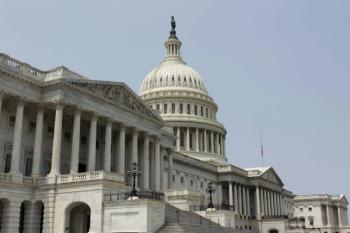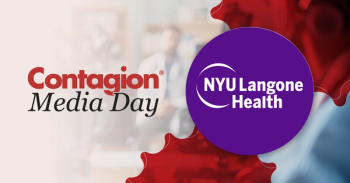
Examining the Epidemiology and Etiology of Measles
Segment Description: Experts provide historical context to measles management and review the current paradigm of disease prevention versus spread.
Glenn Fennelly, MD, MPH: Hello, and thank you for joining us today for this Contagion® program. Although it was declared eliminated in the United States in 2000, measles has once again captured the public’s attention as the number of outbreaks surges across the country and globally. We continue to see alarming statistics. But a discussion about measles is more than just a discussion on the disease itself. The current outbreaks involve the issues of vaccination, individual state laws, exemption definition, and the role of clinicians and public health officials. We’ll cover a lot of that today. I’m Dr. Glenn Fennelly, professor and chair of pediatrics at Rutgers New Jersey Medical School and a pediatric infectious disease specialist.
Christina Tan, MD, MPH: Hi, I’m Dr. Tina Tan. I’m state epidemiologist and an assistant commissioner with the New Jersey Department of Health.
Glenn Fennelly, MD, MPH: Thank you, Tina. Today we’re going to have an important conversation about the current measles outbreaks. Let’s get started. Why is measles such a public health threat?
Christina Tan, MD, MPH: Well, measles is 1 of these diseases that has been around and with us in general for many, many centuries. In fact, dating back to the seventh century, this was described in the literature. That was the first reference. It had worldwide impact before the vaccination era, and we described the vaccination era as anything after 1963, when the first licensed vaccine was made available. There were something around 500,000 reported measles cases in the United States every single year and about 500 deaths also reported every single year. But we believe that’s also an underestimation of what we were seeing here in the United States, where there were probably millions of cases of measles during this prevaccination era.
So measles still is an issue. As mentioned a little bit earlier, we’re seeing measles worldwide. The epidemiology of measles is that it still does exist in many places of the world right now. We just have to be aware of this and recognize that this is a vaccine-preventable disease. We have tools in our armamentarium to try to combat this.
Glenn Fennelly, MD, MPH: Very good, very good. And I think it’s important to note that the transmission of measles was eliminated in the United States in the year 2000 in the wake of a major outbreak in 1989 to 1991 that included upward of 50,000 cases total. And since then, all the cases have been linked to imported cases, mainly among pockets of underimmunized populations.
Why is measles such a threat, such a concern? There’s a very, very high incidence of complications. Children, about 1 in 10, can get a severe ear infections of otitis media. It can cause deafness. About 1 in 20 will get pneumonia from a bacterial superinfection. And that’s actually the major cause of death. Measles can kill 1 to 2 in 1000. And in populations that are immunosuppressed or are malnourished, those rates can be much, much higher: as high as 5% overall, or higher. It can cause an encephalitis, which in many cases causes severe sequela in about 1 in 1000 cases. This is why we have to be vigilant. This can happen to any child anywhere who gets measles.
Where are the current epidemics in the United States? It’s hit several states. We had an outbreak in New Jersey at the end of last year, which we’ll discuss a bit further later on. There are ongoing epidemics in New York, in New York City. There have been more than 90 cases in the last couple of weeks reported. And 90% of these kids are unimmunized. Now we’re seeing outbreaks in Washington, Oregon, and I hear most recently Texas. Internationally there is a major epidemic in Europe that’s been going on over the last year with about 85,000 cases and more than 70 deaths, even though paradoxically Europe is at its highest in terms of rates of immunization: 90% receiving first dose, 95% receiving the total 2-dose recommended regimen. Still, there are pockets of vulnerability that have allowed this to be possible.
Newsletter
Stay ahead of emerging infectious disease threats with expert insights and breaking research. Subscribe now to get updates delivered straight to your inbox.




















































































































































































































































































